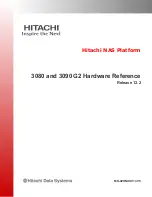
Response time
The response time (t
1
to t
3
) - that is the time from the application of the digital output values in
internal memory until the specified value is obtained at the analog output - is, in the most
unfavorable case, the sum of the cycle time and the settling time.
The worst case scenario is given, when the analog channel has been converted immediately
before a new output value is transferred, and is not converted again until all other channels
have been converted (cycle time.)
See also
Commissioning the SM 431; AI 8 x 13 Bit (Page 235)
5.8
Assigning parameters to analog modules
5.8.1
General information about parameter assignment
Introduction
The characteristics of analog modules may differ. The characteristics of the modules can be
defined by assigning parameters.
Tools for parameter assignment
You program analog modules in
STEP 7.
After you have defined all parameters, download these from your programming device to the
CPU. The CPU transfers the parameters to the relevant analog modules at the STOP > RUN
transition.
Static and dynamic parameters
The parameters are divided into static and dynamic parameters.
Set the static parameters in STOP mode of the CPU, as described above.
You may also edit dynamic parameters in the active user program of an S7 PLC using SFCs.
However, the parameters set in
STEP 7 will be applied again after a RUN > STOP, STOP >
RUN transition of the CPU. You will find a description of the parameter assignment of modules
in the user program in the Appendix.
Configuration in RUN (CiR)
CiR (Configuration in RUN) is a method you can use to modify your system or edit the
parameters of individual modules. These changes are made while your system is in operation,
that is, your CPU will stay in RUN over a maximum of 2.5 seconds while these changes are
applied.
Analog modules
5.8 Assigning parameters to analog modules
S7-400 Automation System Module Data
Reference Manual, Ausgabe 11/2016, A5E00850736-08
199















































